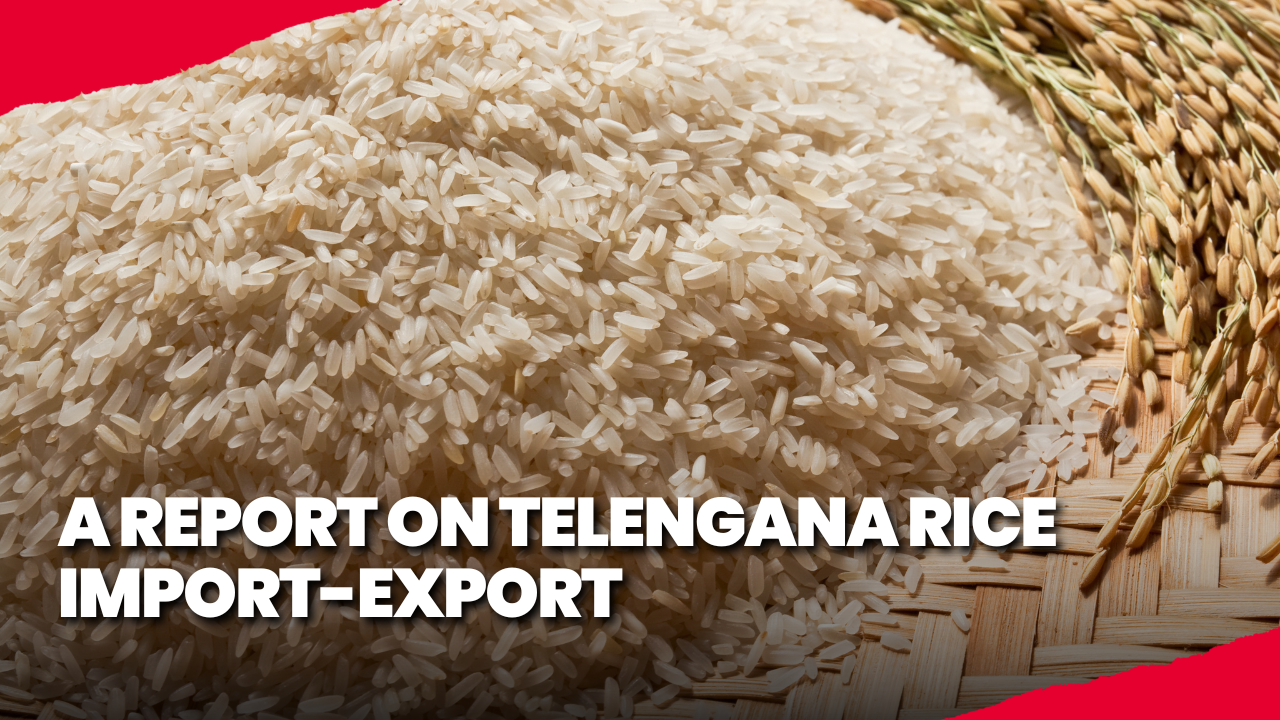
Telangana rice is a type of rice that is grown in the state of Telangana, India. It is a healthier alternative to regular white rice and is suitable for people with diabetes and those who are trying to manage their weight.
Here Are Some of the Characteristics of Telangana Sona Rice
- Low glycemic index: Telangana Sona rice has a low glycemic index, which means it slows the release of sugar into the body. This can help maintain stable blood sugar levels.
- High in nutrients: Telangana Sona rice is high in protein and fiber, and low in fat.
- Soft texture: Telangana Sona rice has a soft texture and taste.
- Blast-resistant: Telangana Sona rice is a blast-resistant paddy variety.
- Sugar free: Telangana Sona rice is sugar free.
- Thin and long grained: Telangana Sona rice has a thin and long grain.
- 50% less carbohydrates: Telangana Sona rice has 50% less carbohydrates than regular white rice.
Varieties of Rice Grown in Telangana Include
Telangana Sona
A white rice variety with a low glycemic index and fine grains. It’s suitable for people with diabetes or cholesterol issues, and may also help with weight loss.
Rajendranagar Vari 28361
A rice variety with long, slender grains.
Warangal Vari 1119
A rice variety that’s resistant to gall midge, a major issue in the Central and Northern Telangana districts.
Sona masuri
A medium-grain rice that’s aromatic and lightweight. It’s often used for biryani, fried rice, idlis, and sweet pongal.
Samba Mahsuri
A popular variety of rice among farmers in Telangana, Andhra Pradesh, Karnataka, Tamil Nadu, and Uttar Pradesh
International Buyers
- Padiberas Nasional Berhad Bernas
- Bamo Company For General Trading and Commercial Agencies Ltd
- Abdulrahman And Mohd A Aziz
- Kuwait Supply Co
- Bamo Company For General Trading Ltd
- Saudi National Bank Jeddah
- Dukhan Bank Doha Qatar
- Kuwait Supply Co
- Abdulrahman And Mohd A Aziz Alshalan Company
- Kanis Commodities
Export Destination

Also Read This: A Detailed Report on Brooms Import-Export
Why India is the Largest Exporter of Rice in the World?
India stands as the world’s largest exporter of rice, a status achieved through a confluence of several important factors:
- Fertile Land and Ideal Climatic Conditions:
India boasts a wealth of fertile lands, especially in the Gangetic plains, North-Eastern region, and Coastal areas – making it perfect for rice cultivation. Monsoon rains provide ample water supply, and the tropical climate is highly suitable for the growth of different rice varieties.
- Extensive Variety of Rice:
Home to thousands of indigenous rice varieties, India has the capacity to meet a wide range of global customer preferences. The superiority and distinctiveness of certain varieties like Basmati, which is extensively exported, significantly boosts its global demand.
- Scale of Production:
With agriculture forming the backbone of its economy, India is one of the largest cultivators of rice globally which enables it to export surplus quantity. The highest-yielding states, like West Bengal, Uttar Pradesh, and Punjab, significantly contribute to overall production.
- Government Policies:
Indian Government policies often promote rice cultivation through the provision of subsidized fertilizers, minimum support prices, irrigation schemes, and crop insurance. Export-friendly policies also aid in reaching a wider market globally.
- Infrastructure and Technological Advancements:
India’s developing infrastructure and technological progress in the agricultural sector, like mechanization and modern irrigation techniques, have pushed up rice production over the years.
- Low Production Cost:
Due to a large labor force available at a relatively low cost, the overall cost of rice cultivation in India often stays less compared to other countries, enabling competitive pricing in the international market.
All of these factors together help India maintain its position as the largest exporter of rice in the world.
Business Start Up Process
STEP 1 :- Business Registration
Proprietorship Firm
MSME (Udyam Aadhar)
Partnership Firm
Deed
ROF (Registration of Firm)
LLP (Limited Liability Partnership)
Deed
CIN (Certificate of Incorporation)
Company
MOA
AOA
ROC
STEP 2 :- PAN
Proprietor – Individual (Self)
Partnership Firm – Firm’s Name
LLP (Limited Liability Partnership) – LLP’s Name
Company – Company’s Name
STEP :- 3 GST (Goods & Services Tax)
STEP :- 4 Bank Account (Current A/c)
STEP :- 5 IEC – Importer Exporter Code
STEP :- 6 RCMC – Registration with Export Promotional Bodies (EPC, CB, DA, Etc.)
STEP :- 7 Port Registration (Nearest Port where you source)
ICEGATE Registration
STEP:- 8 COC – Chamber of Commerce
DGFT Registration
STEP: -9 Others – If Any
Documents Mandatory For Export
Pre-Shipment
a. Proforma Invoice / Agreement / Contract
b. Letter of Credit
Post-Shipment
a. Commercial Invoice
b. Packing List
c. B/L / AWB / LR
d. Certificate of Origin
e. Insurance
f. Others (if any)






